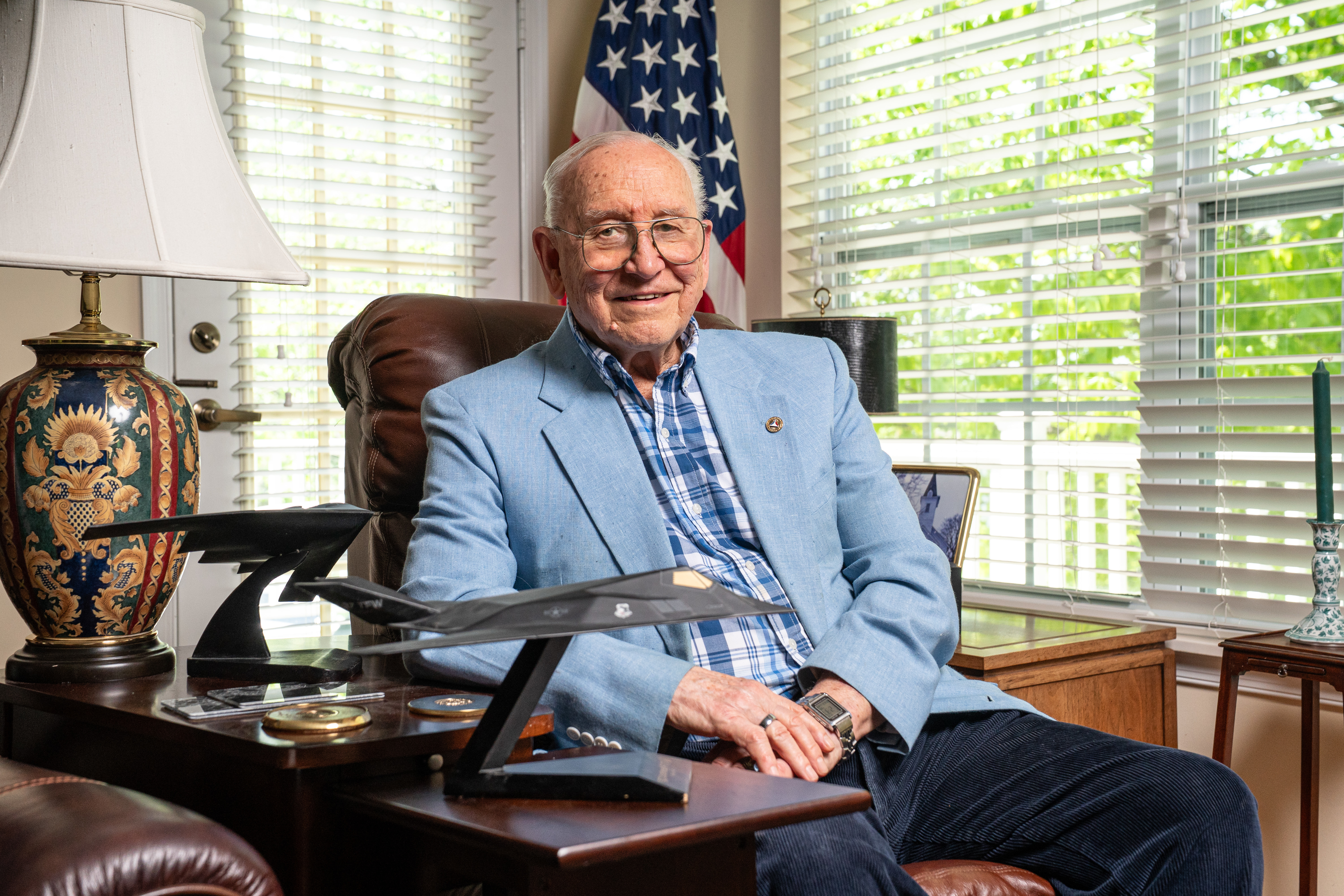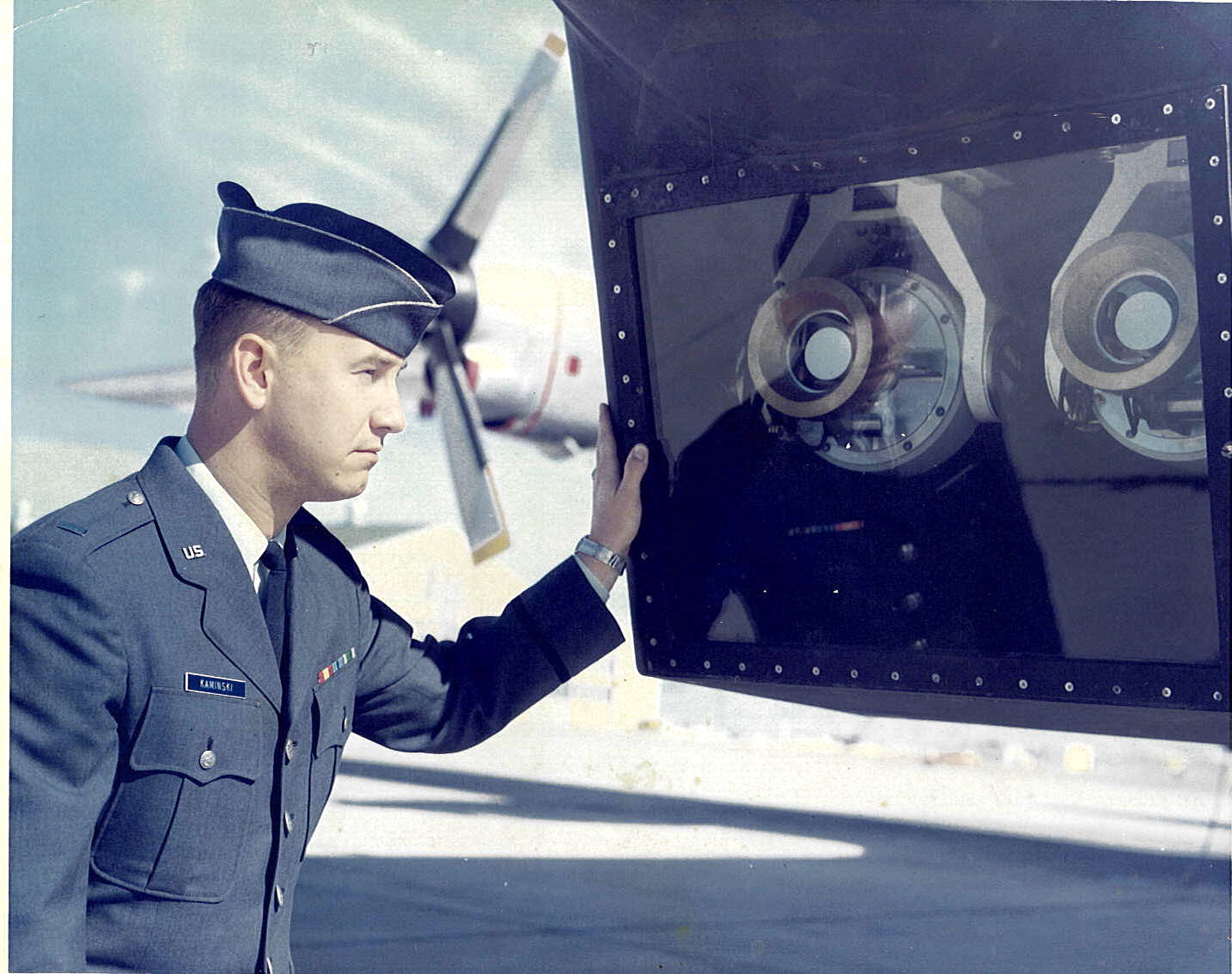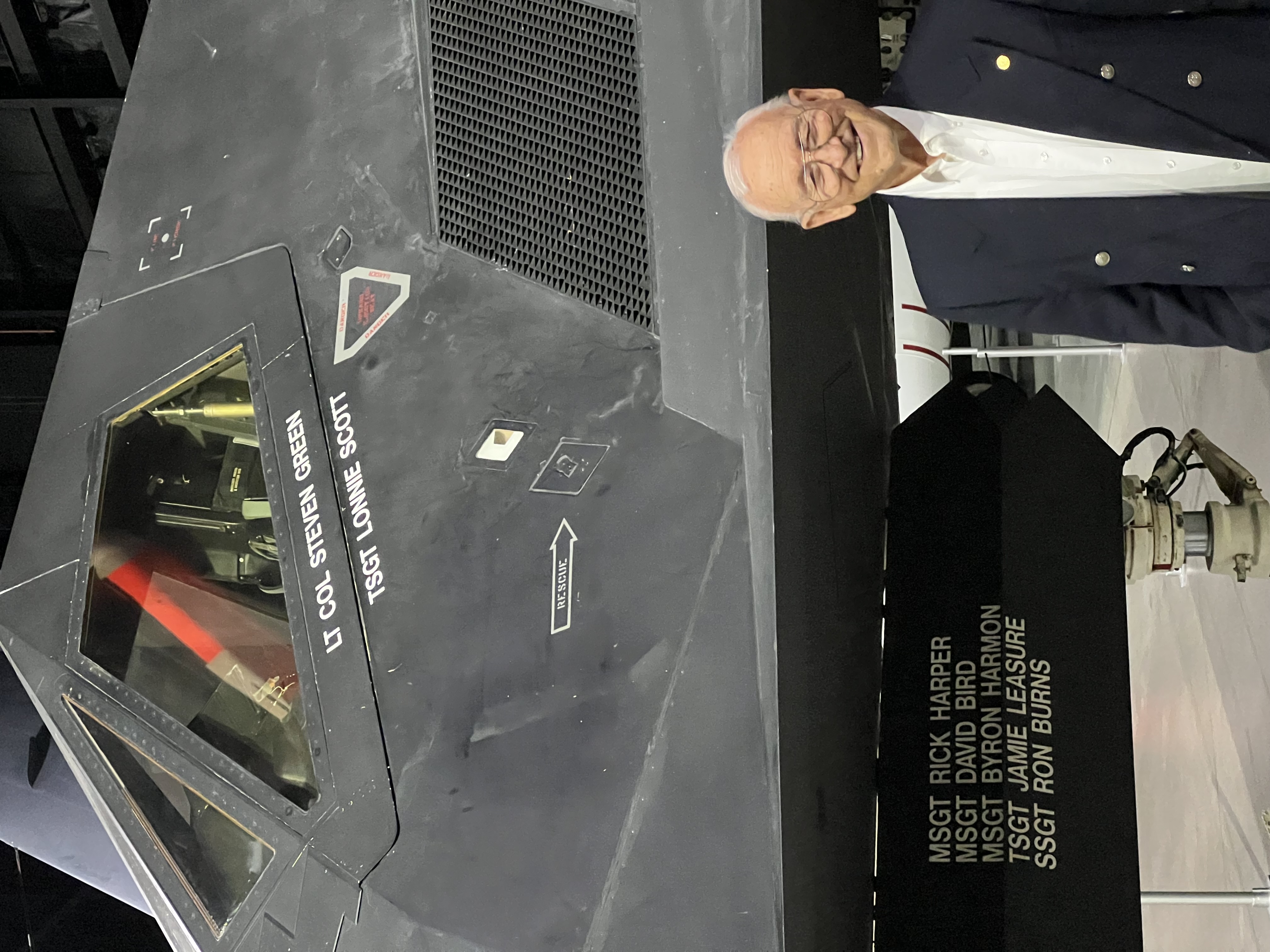Checkpoints: Augmenting an Academy education
Dr. Paul Kaminski ’64
Dr. Paul Kaminski ’64 enjoyed a U.S. Air Force career full of technological firsts that made the United States safer and demonstrated its technological prowess.
He worked on the Minuteman missile program, testing its inertial guidance system. He then worked on developing and testing a television guidance system for air-to-surface missiles, which resulted in the first precision-guided munitions, eventually enabling one missile to hit one specific target. For this work, he was presented with the Air Force Systems Command Scientific Achievement Award.
He then focused on conducting classified research on satellite systems for the National Reconnaissance Office to create the first synthetic aperture radar in space. This system developed special processing that was like what is now used during a CAT scan. This work allowed a radar in space with about a 100-foot antenna to have nearly the same resolution as an antenna with the diameter of tens of miles.
Dr. Kaminski says, “That gave us the ability to find the targets of interest — day, night, and through clouds and in bad weather.”
After that success came his work on the stealth program as director of low observables technology.
“I had a real motivation about that, because about 5% of my graduating class was killed in action, taken as a prisoner of war or injured so badly that they couldn’t get back into an aircraft,” he says of their involvement in the Vietnam War. “We have not lost a single individual to an air defense system since we’ve been using the stealth aircraft.”
The success of the F-117 Nighthawk during Operation Desert Storm in 1990 — using all three of the technologies Dr. Kaminski worked on — made adversaries around the globe take notice.
“We were using technology to be able to operate with much smaller forces and still compete effectively with the bigger forces,” Dr. Kaminski says.
Thirty-five years later, he is working on and supporting a new project at his alma mater aimed at preparing today’s cadets for future careers in emerging technologies, such as artificial intelligence.

Augmented, not artificial
Dr. Kaminski, a 2002 USAFA Distinguished Graduate, made a significant gift in late 2024 to support the academic exploration of augmented intelligence at the Air Force Academy.
“I never liked the term artificial intelligence. I know what intelligence means, but I don’t know what the artificial means. I think they call it artificial because it’s not human intelligence. But I don’t know what you do with that,” Dr. Kaminski says. “And the reason I use the term augmented is that we’re usually trying to augment a human, and have a human augment the processing, to make decisions faster and with greater accuracy than either a human or an autonomous machine can do alone.”
Dr. Kaminski realizes the importance, benefits and dangers of augmented intelligence, and he wants cadets to learn how to use it and defend against it effectively. His $5 million gift has created the Dr. Paul Kaminski ’64 Endowment for Augmented Intelligence within the Academy’s Institute for Future Conflict. The Academy can use distributions from the endowment to hire an AI expert to help with incorporating the subject and use of AI in academic curriculum, military training and athletic performance.
“I feel it has offered tremendous leverage, and it’s a really remarkable technology. But anything that good and that remarkable can be used for good, and it can be equally used to do very bad things,” Dr. Kaminski says.
To ensure graduating cadets are prepared for potential uses of AI in their military assignments, Dr. Kaminski proposes the introduction of assignments on good decision-making connected to AI. He also believes almost every academic discipline at the Academy will need to understand how AI can be or is being used to improve a given field.
He suggests that cadets new to AI could use an AI service, with limited sources, to generate a research report. The cadet would then write a paper that documents the process, what was missing from the report, and which offered recommendations would not be useful in a final report. Such a project would focus on critical thinking and understanding the right questions to ask and how to ask them.
Dr. Kaminski likes to illustrate the purpose of the IFC by quoting Wayne Gretzky, who, when asked what made him a great player, once famously answered, “I skate to where the puck is going to be, not where it has been.”
“When I looked at our academic program, not only were we not skating to where the puck is, we were skating to where it was several years ago, and we needed to move that all the way up to where the puck is now and where it’s going to be,” Dr. Kaminski says.
Dr. Kaminski sees his new endowment and the work it will fund as one way cadets can participate in AI development and work in internships in industry. He wants to see cadets use and test AI technologies to find what works and what still needs improving. Then, they can send that feedback to developers to help improve the products.
He also wants to leverage his industry connections — he serves on the boards of several technology-focused companies — to create collaboration opportunities. That could include fellowships, internships or on-base opportunities.
Dr. Kaminski realized early in his career that these types of interactions would have helped him understand the importance of what he was learning.
“My first-class year I was taking the course in matrix and vector analysis. And I was thinking, ‘Where the hell am I ever going to use vector and matrix analysis in my career?’ Turns out, I used it a lot,” Dr. Kaminski says. “If I had known that, I would have studied a lot more and better than I did. So I wanted to see, could we do something at the Academy to give cadets some appreciation of how this might help them in the future? And that’s what the IFC is doing, and it is doing very well with its fine leadership.”

A life well-lived
“My focus in life today is making a difference in our capabilities as a nation and helping people understand where we’re falling behind in the technology that makes a difference,” he says. “The objective, I think, is to get our defense industrial base back into the manufacturing business in a bigger way and keep developing the technology that allows us to do those kinds of offsets where we can use fewer people to do missions that adversaries couldn’t do even with more people.”
In fact, Dr. Kaminski has been making a difference in the nation’s defense capabilities his entire career.
After a 20-year Air Force career, he retired as a colonel and started a company — Technology Strategies and Alliances — with William Perry, former undersecretary of Defense for technology, and two others. The investment banking and consulting firm focused on matching smart startup companies with large, established companies to leverage the strengths of each to advance the state of technology.
When Dr. Kaminski’s business partner became the U.S. secretary of Defense in 1994, he asked Dr. Kaminski to be the undersecretary of Defense for acquisition and technology. In that role, he was responsible for all DOD research, development and acquisition programs. He also oversaw logistics, environmental security, international programs, the defense industrial base and military construction.
After he left the Department of Defense, he started Technovation, another company dedicated to fostering innovation and developing business and investment strategies supporting advanced technology in the aerospace and defense sectors. He closed the company at the end of 2024.
Dr. Kaminski has also offered his expertise to the President’s Intelligence Advisory Board, the FBI Director’s Advisory Board, the DNI Senior Advisory Group, the Senate Select Committee on Intelligence Technical Advisory Board, and as chairman of the Defense Science Board and the National Academies Air Force Studies Board. Among his many honors, he was awarded the National Medal of Technology by President George W. Bush in 2006, and he was inducted into the National Aviation Hall of Fame in 2020.

The power of an Academy education
Dr. Kaminski is pleased with the early success of the Institute for Future Conflict and its excellent leadership to reach across the Academy. He points to the Academy’s potential new minors in future conflict and quantum theory, top secret clearance for cadets and cadet access to a simulated air operations center as positive developments within the program.
Cadets can “solve real problems and solve them at the same time that our leadership is working on those problems to kind of see how we’re doing. It’s a great opportunity to get that exposure,” he says.
He would like to see the creation of war games — squadron against squadron — using the tools available in the IFC and elsewhere. Then, he suggests expanding that and the IFC concept to other service academies.
These and other activities could prepare cadets for the many military applications of augmented intelligence. For example, Dr. Kaminski foresees many ways AI can be applied during combat: manipulating adversaries’ AI systems so they are not serving their humans well; using the F-47, which will include an autonomous wingman — an AI co-pilot — to control collaborative combat aircraft; and possibly including an autonomous tanker for refueling fighter jets or another system for refueling altogether. The list of possibilities can seem almost endless.
“The chair funded by Dr. Kaminski will not only establish a building block foundation for all our cadets but also will be very closely tied to all the work that will be developed in the Madera Cyber Innovation Center,” says Maj. Gen. (Ret.) Dave Scott ’78, Air Force Academy Foundation liaison to the IFC. “Each cadet will graduate with a much deeper understanding of augmented intelligence, machine learning and how to integrate these capabilities across all domains of warfare. It will prepare these men and women to be much better prepared to prevail in conflict regardless of the form it may take in the future.”
Similarly, as a first lieutenant fresh out graduate school, Dr. Kaminski realized how his education had set him up for great things. He earned masters degrees in electrical engineering and aeronautical and astronautical engineering from Massachusetts Institute of Technology and a doctorate in aeronautical and astronautical engineering from Stanford University.
“I found that I could do more things as a first lieutenant in the Air Force than I would be able to do in 10 years in the average industrial company. I had the opportunity to do major things, to take risks on some things,” he says. “There’s great leverage there, and then also the educational opportunities that came with it, and cadets still have that today.”
When Dr. Kaminski first proposed in 2016 the "big idea" for what became the IFC, he didn’t know how it would develop or if it would be accepted at the Academy. Because of its progress and success, he has continued to offer support through philanthropy and counsel, including through his sustained engagement on the Air Force Academy Foundation board of directors and as chairman of its academic committee.
“If it weren’t for the IFC, I probably wouldn’t be much of a philanthropist,” he says.
Through Dec. 31, 2024, which marked the conclusion of the Defining Our Future comprehensive campaign, 280 donors had contributed $15 million to support the IFC at the Air Force Academy, including Dr. Kaminski’s $5 million endowment.
“We are grateful for Dr. Kaminski’s vision for the IFC and his generous contributions to make it a reality,” says Mark Hille ’97, president and CEO of the U.S. Air Force Academy Association & Foundation. “The IFC is one of the transformative initiatives made possible by the recently completed Defining Our Future campaign. The IFC has inspired donors to directly support cadets as they prepare for an increasingly complex and dynamic future.”

